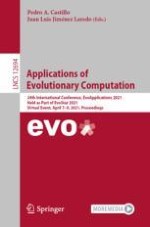This book constitutes the refereed proceedings of the 24th International Conference on Applications of Evolutionary Computation, EvoApplications 2021, held as part of Evo*2021, as Virtual Event, in April 2021, co-located with the Evo*2021 events EuroGP, EvoCOP, and EvoMUSART.
The 51 revised full papers presented in this book were carefully reviewed and selected from 78 submissions. The papers cover a wide spectrum of topics, ranging from applications of evolutionary computation; applications of deep bioinspired algorithms; soft computing applied to games; machine learning and AI in digital healthcare and personalized medicine; evolutionary computation in image analysis, signal processing and pattern recognition; evolutionary machine learning; parallel and distributed systems; and applications of nature inspired computing for sustainability and development.
